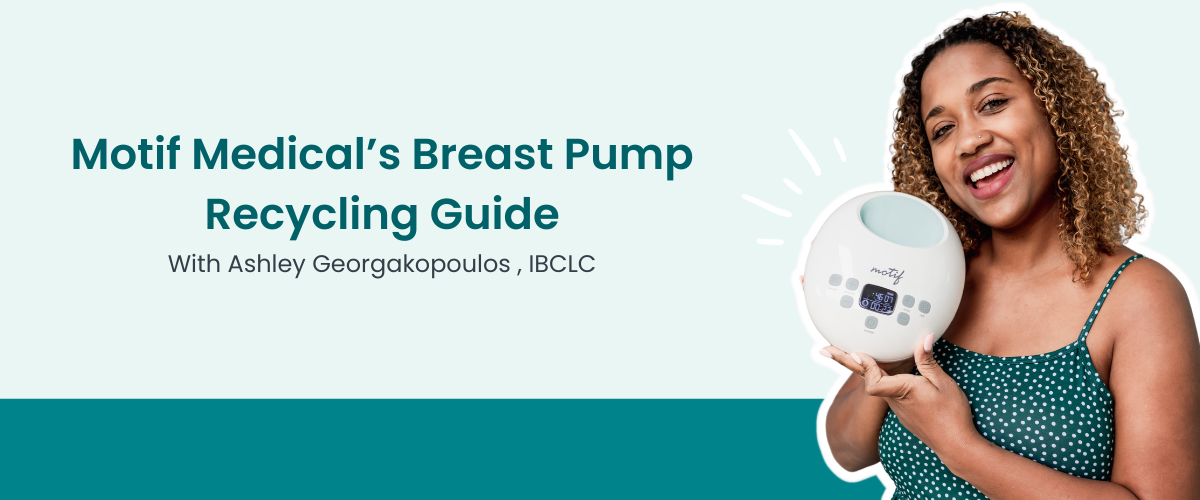Breast compression refers to the mother hand expressing while the baby is attached and feeding, or while the mother is pumping (hands-on pumping). This technique allows more milk to flow without solely relying on suction. It is particularly helpful in cases where a baby is too sleepy to finish a feed after the letdown response, a milk duct contraction-induced flow, or in instances when a mother is relying on pumping.
The first few weeks of life are crucial for a baby to feed well, but in some cases, can be particularly difficult. Babies respond to milk flow, and will often be accused of being “lazy” if not consistently sucking and swallowing, or even falling asleep at the breast. In reality, some need a little help getting milk to flow until the feeding obstacle has passed or been corrected.
A similar tool to compression is the Supplement Nursing Systems (SNS) using a separate compartment to store milk or formula, and a small tube inserted in the baby’s mouth while keeping the baby at the breast. Milk is then controlled slowly, instigating a suck response, and the tube is removed once the baby is suckling well at the breast.
The caveat to this, however, is that the SNS can be expensive, messy, and hard to handle without someone else helping. Breast compression can be done with ease, using the free hand not holding the baby.
An important side note to point out is that as long as feedings are going well and the baby is actively eating and gaining, hand expression while feeding at the breast is not necessary. It’s also helpful to remember that breasts are essentially a circle - adjust around all possible holds!
Scenarios where breast compression is helpful:
Jaundice
Poor latch – sore nipples, folded lips, clicking tongue, frequent detachment, dimpled cheeks from poor suction, prematurity-related latching difficulties
Weight loss or slow weight gain
Clogged milk ducts or engorgement
Breast pumping
To utilize breast compression during a feed, first get the baby positioned and comfortable. Once attached, allow the baby to suckle for a while. You can incorporate circular breast massage during this time, even up into the armpit area, where alveoli and milk ducts can be located, as well.
At the point that your baby slows or starts to fall asleep, slip your free hand around your breast, thumb on top, fingers on the bottom. Squeeze and hold. This builds internal pressure, causing milk to physically be pushed out. At this point, your baby should start suckling and swallowing again. Relax the hand.

You can repeat this step anytime the baby slows back down. Allow the baby to remain at the breast after a few tries, as this repetition may trigger another letdown, helping the baby eat with ease and less suction involved.
Hands-free pumping is ideal for this scenario. This can be accomplished by:
Prior to pumping, applying heat and circular massage are great primers. Once ready and softened, prepare to pump and turn it on. With your free hand, you can provide both massage and compression, adding another layer of help to your overall pumping output.
Simply hold a breast with fingers below, and thumb on top. Push inward toward the torso/spine as if flattening into a symmetric circle and gently squeeze. This step is ideal once the stimulation or massage setting has triggered the letdown/milk flow response, or when milk flow is slowing back down.
Keep in mind that suction can be easy to break if allowed to sag at all or if compression is too close to the flange.
Resources:
The first few weeks of life are crucial for a baby to feed well, but in some cases, can be particularly difficult. Babies respond to milk flow, and will often be accused of being “lazy” if not consistently sucking and swallowing, or even falling asleep at the breast. In reality, some need a little help getting milk to flow until the feeding obstacle has passed or been corrected.
A similar tool to compression is the Supplement Nursing Systems (SNS) using a separate compartment to store milk or formula, and a small tube inserted in the baby’s mouth while keeping the baby at the breast. Milk is then controlled slowly, instigating a suck response, and the tube is removed once the baby is suckling well at the breast.
The caveat to this, however, is that the SNS can be expensive, messy, and hard to handle without someone else helping. Breast compression can be done with ease, using the free hand not holding the baby.
An important side note to point out is that as long as feedings are going well and the baby is actively eating and gaining, hand expression while feeding at the breast is not necessary. It’s also helpful to remember that breasts are essentially a circle - adjust around all possible holds!
Scenarios where breast compression is helpful:
Jaundice
Poor latch – sore nipples, folded lips, clicking tongue, frequent detachment, dimpled cheeks from poor suction, prematurity-related latching difficulties
Weight loss or slow weight gain
Clogged milk ducts or engorgement
Breast pumping
Breast Compression While Breastfeeding
To utilize breast compression during a feed, first get the baby positioned and comfortable. Once attached, allow the baby to suckle for a while. You can incorporate circular breast massage during this time, even up into the armpit area, where alveoli and milk ducts can be located, as well.
At the point that your baby slows or starts to fall asleep, slip your free hand around your breast, thumb on top, fingers on the bottom. Squeeze and hold. This builds internal pressure, causing milk to physically be pushed out. At this point, your baby should start suckling and swallowing again. Relax the hand.

You can repeat this step anytime the baby slows back down. Allow the baby to remain at the breast after a few tries, as this repetition may trigger another letdown, helping the baby eat with ease and less suction involved.
Breast Compression While Pumping
Hands-free pumping is ideal for this scenario. This can be accomplished by:
- Pumping one breast at a time, freeing up one hand
- Using arm and hand to hold both sides up to the breasts (I did this plenty of times in my pumping days)
- Purchasing a hands-free pumping bra
- Make your own pumping bra - cut small holes in an old sports bra
Prior to pumping, applying heat and circular massage are great primers. Once ready and softened, prepare to pump and turn it on. With your free hand, you can provide both massage and compression, adding another layer of help to your overall pumping output.
Hands-On Pumping Technique
Simply hold a breast with fingers below, and thumb on top. Push inward toward the torso/spine as if flattening into a symmetric circle and gently squeeze. This step is ideal once the stimulation or massage setting has triggered the letdown/milk flow response, or when milk flow is slowing back down.
Keep in mind that suction can be easy to break if allowed to sag at all or if compression is too close to the flange.
Resources:
- Morbacher, Nancy. “To Pump More Milk, Use Hands-On Pumping.” Breastfeeding USA, 31 Mar. 2016, breastfeedingusa.org/content/article/pump-more-milk-use-hands-pumping.
- Newman, Jack. “Breast Compressions to Increase Milk Flow to the Baby.” International BreastFeeding Centre, 2017, ibconline.ca/information-sheets/breast-compression/.
- Butler, Karen. “My Baby Needs More Milk.” La Leche League GB, 8 June 2019, www.laleche.org.uk/my-baby-needs-more-milk/.
- Bonyata, Kelly. “Latching and Positioning Resources • KellyMom.com.” KellyMom.com, 9 Apr. 2018, kellymom.com/ages/newborn/bf-basics/latch-resources/.








